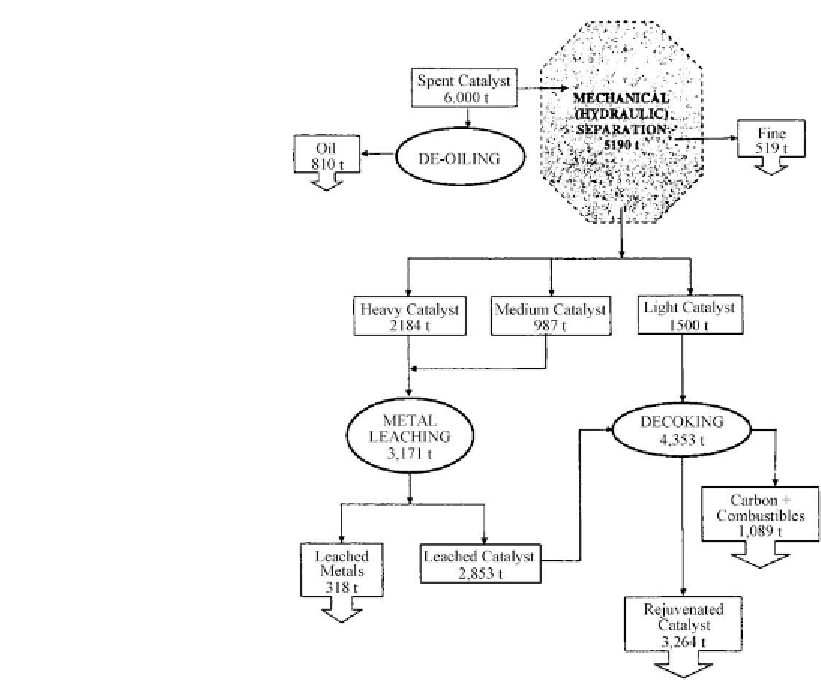Environmental Engineering Reference
In-Depth Information
Figure 6.35: Flowsheet and mass balance involving mechanical separation, decoking, and
rejuvenation steps [From ref.
462
. Reprinted with permission].
Otherwise, such pretreatments have to be performed by regenerating company. In this case,
de-oiling and mechanical separation processes may be integrated with regeneration process as
it is shown in
Fig. 6.35 [462]
. The phase separator employing fluid mechanics, which is
suitable for density grading spent catalyst particles, is shown in
Fig. 6.36 [462]
. Separation
depends on the particle terminal velocity, which is a function of the physical and transport
properties of the fluid and catalyst particles. By adjusting a fluid flow for each compartment,
the catalyst particles with different densities are separated. For the steady flow of fluid past the
moving solid, boundary layers are established. The force exerted on the solid is a combination
of the boundary layer drag, form drag, external force, and buoyant force. The rate of separation
of phases settling in a gravitational field is usually limited by the rate of fall of the smallest
particles with residence time, which is important in determining the size of unit. In an ideal
case, the solvent, which was used for de-oiling, would also be used for separation. This would
avoid necessity for drying the de-oiled catalyst. The density grading can be successfully








